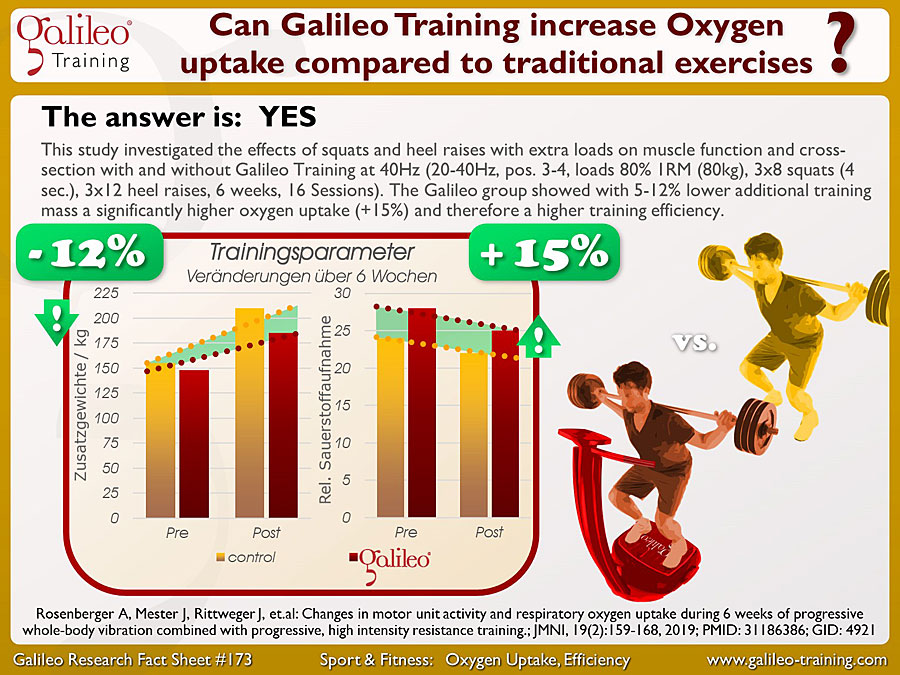Galileo Research Facts No. 173: Can Galileo Training increase Oxygen uptake compared to traditional exercises?

This study of the German Space Center (DLR) investigated the additional effects of Galileo Training during deep squats and heel raises with additional weights targeting training efficiency. Main outcome parameters were oxygen uptake and muscle activation (EMG). Participants received over a duration of 6 weeks, 3 times per week at additional loads of 80% one repetition maximum (1RM) 3×8 deep squats and 3×12 heel raises. Training intensity was increased by further increasing the extra load. Other than the control group the Galileo group trained at up to 40Hz and position 3-4.
The Galileo group showed 5-15% higher effects at muscle activation (EMG) as well as oxygen uptake. Even though the training was therefore more effective, interestingly the Galileo Group needed 15% less additional weights – so less extra load but yet higher training intensity – which made Galileo Training much more efficient than traditional exercises. And training with less extra load also means less demanding for joints.
Also interesting was the fact, that all participants tolerated training at very high frequencies of 40Hz (up to now usually only used by athletes on the Galileo #GRFS146, #GRFS135, #GRFS110). This shows that also high training frequencies can be used very effectively on the Galileo.
#GRFS173 #GalileoResearchFacts #GalileoTraining #MechanoStimulation #TrainingIntensity #DLR #OxygenUpdate #Oxygen #40Hz #Efficiency
- Produktgruppen: Galileo Therapy, Galileo Training
- Themen: Athletics, Back, Back Pain, Basics, Diseases, Fit Aging, Fitness at Home, Fitness at the Gym, Fitness at Work, Geriatrics, Health Promotion at Work, Incontience, Medical Applications, Neurological Conditions, Orthopedic Diseases, Osteoporosis, Paediatrics, Pelvic Floor, Prevention, Pyhsitherapy & Rehabilitation, Stroke, SCI, Therapy & Prevention using Galileo, Training for Kids, Training with Galileo, Wellness & Beauty